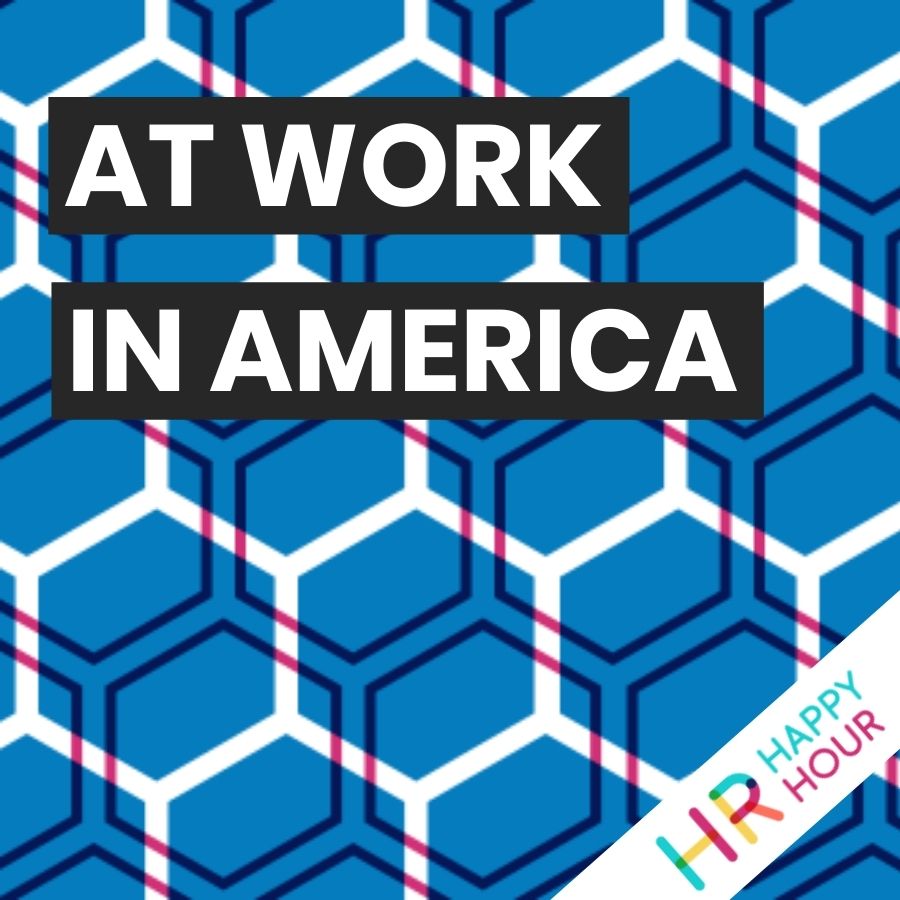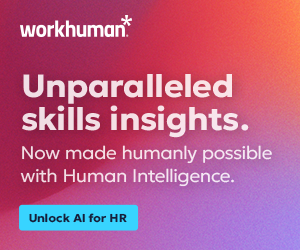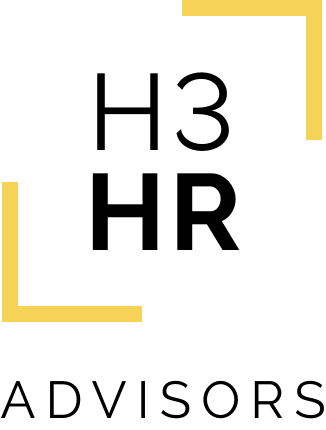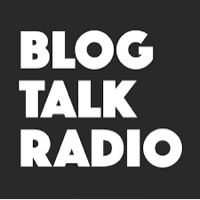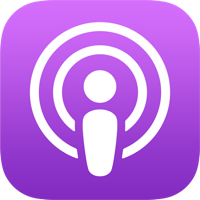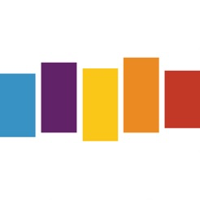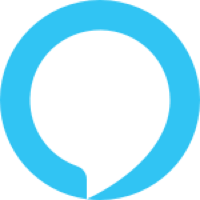Balancing Ambition and Alignment: Nurturing Personal and Professional Growth
Hosted by

Steve Boese
Co-Founder and Chief Data Officer of H3 HR Advisors and Program Chair, HR Technology Conference

Trish Steed
Co- Founder and Chief Strategy Officer, H3 HR Advisors
About this episode
Balancing Ambition and Alignment: Nurturing Personal and Professional Growth
Hosts: Steve Boese, Trish Steed
Guest: Ben Brooks, Founder & CEO of PILOT
This episode of At Work in America is sponsored by Paychex, one of the leading providers of HR, payroll, retirement, and insurance solutions for businesses of all sizes. Visit paychex.com/awia today.
This week we met with Ben Brooks from PILOT for our mid-year check in and chat about goals, skills, and DEI in your organization.
– How to respect your goals for 2023
– The wheel of life approach to time management
– Planning your financial goals
– The value of storytelling and data
– Calibrating your commitment to diversity
Thank you for joining the show today! Remember to subscribe wherever you get your podcasts!
Transcript follows:
Announcer 0:00
Welcome to At Work in America sponsored by Paychex. At Work in America digs in behind the headlines and trends to the stories of real people making a difference in the world of work. And now here are your hosts, Steve Boese, and Trish Steed.
Steve 0:26
Welcome back to the At Work in America show! We have a great show today, we’re welcoming back our friend, frequent guest, world traveler, Ben Brooks, back to the show. Trish before we welcome Ben, let’s thank our friends of course, Paychex for all their support. Wonderful to work with them for yet another year. They’re just doing great work specifically lately Trish around the ERTC tax credits for their customers, right. So like I’m sure PILOT was one of these organizations, right? If you manage to sort of stay alive through the pandemic and keep folks on the payroll, right. There’s some great programs where you can claim back and get credits back for just doing what you had to do to keep folks on the payroll and get us all through the pandemic. And so Paychex really does a masterful job, right of helping clients navigate the myriad of forms and processes to do that. So thanks to them for that.
Trish 1:17
Yes and just really everything other resources on their page. I use it frequently, even though I’m no longer practitioner. So I think it’s valuable. Whether you’re a small business, you’re an HR leader, you’re maybe an HR department, you want to know more about what’s going on in the world and the economy. They just have so many resources. So thank you Paychex.
Steve 1:36
Yes. So visit paychex.com for all of that and much, much more. Oh, all right. So let’s get right to it. We’re welcoming back to the show, Ben Brooks. Ben is the founder and CEO of PILOT, an award winning employee career development software platform cherished that just celebrated its 70th anniversary, or birthday or both? I’m not sure if it’s an anniversary or birthday. I literally conversation about this. We’ll talk about that. Inspired by his successful CEO and coaching practice Ben’s on opportunity to democratize executive coaching and empower employees at scale. Welcome back to the show coming to us from where tell us from your world travels.
Ben Brooks 2:15
From Bozeman, Montana, the beautiful state of Montana. Glad to be here.
Steve 2:20
That is fantastic. I’ve never been to Montana, I don’t believe. Are you one of those folks that I bet you are you? Are you ticking off the states. You are a famous traveler.
Ben Brooks 2:34
I have an app even where I track countries and states I’ve been to so Montana was a new state for me. I grew up in Colorado. And so I went to Texas grew up in Colorado, we spent many summers in Wyoming but it was always kind of, you know, it’s very similar, you know, in fields, we never made it to Montana. And I’ve wanted to come here forever. So I only have seven states left after visiting Montana this week. So I’m committed to get to all 50 I may even do every state in Mexico I’m looking at Canadian provinces and territories. Canada’s a little more if you get into the the territories I you know, your real hearty soul, but but I think I’ve been to 14 States and Mexico and there’s about 29 I think total so I’m working I like to you know if I haven’t been I like to go that’s sort of my rule. I haven’t been, check it out.
Trish 3:18
I love that. What has been the most interesting thing that you have either experienced or you know, tasted whatever in Montana, what’s the thing that we should all know go to Montana and be sure to do this thing or see this thing?
Ben Brooks 3:31
Well, you know, they’re famous we’re gonna fly fishing River Runs Through It, I think, certainly put a lot of this on the map and things but I found out by the way that FICO of your FICO credit score is headquartered here in Bozeman, Montana. They were in Minneapolis for some years and relocated here in 2016. There are $1.4 billion revenue company in the universities here but the cuisine here is actually if you like Western or kind of Mountain West fair, I’ve forgotten to eat elk and bison, pheasant. I had rattlesnake sausage and some Rocky Mountain Oysters with a local beer.
Steve 4:09
Oh, yeah, there we go.
Trish 4:10
I do have a question on the elk. I’ve never had elk what is that similar to or is it similar to anything you’ve tried?
Ben Brooks 4:17
Some people I grew up with like we my dad hunted and so what people say it’s a little bit gamey but it’s you know it’s a red meat and so not super dissimilar to like a venison or a deer but definitely a meat that you have a smaller portion of and you want to cook you know, medium rare, like a lot of game and it’s really fresh, but you you know, and have just the right kind of sauce or Glaser’s done something with it so worth checking out.
Trish 4:42
I had no idea until I went to Colorado how large elk are in person. And they’re just like wandering around. We I literally, I think we were coming back from Estes Park. Just a big animal.
Steve 4:54
Those elk. They don’t like to, you know, I mean, where you tell them to?
Trish 4:58
huge
Ben Brooks 4:59
He’s so tall, like so if you didn’t get deer, but their moose like in size.
Trish 5:03
Very much like a moose. Honestly, it just it will be to tell you there was and then we’ll get on to the show but there was a you know, big field with like barbed wire fence, you know, pretty tall fence. This thing didn’t even jump over it just walked over it. And we were all floors were like, Oh, just walked right over that fence. So it was very tall.
Steve 5:23
I want to thank everyone for listening to the Prairie Home Companion. This is great stuff, Ben. So great to see you. Thanks for coming in all the way from Montana. It’s PILOT’s seventh birthday slash anniversary? We don’t know what it doesn’t matter. Congratulations. First off, right from from humble ish beginnings right? You’re probably on a laptop and an idea to seven years later. I’d love for get a little update on what’s been happening this last year.
Ben Brooks 5:53
We like to use the term birthday kind of had some more personal fun sense to it. In that alive sense. You know, PILOT’s doing well. I mean, to your point about humble I founded the company with my life savings. You know, that’s there’s some there’s a rule in entrepreneurship, if you haven’t put payroll on your credit card, your personal credit card, right? You’re not really in the entrepreneur club. I’ve done that many a time. And certainly humbled to your to your point. But we’ve achieved a lot of great success. We just renamed the supplier, the year for diazo, the spirits company that sells Johnnie Walker and Don Julio and kettle one. And we were named their supplier of the year and we’re working with just a lot of great companies all over the country and all over the world. Nestle’s are now our largest customer, we’re just at their headquarters recently, you know, rolling out their largest program ever. And, you know, really touching on the personal side for me, because we had a bunch of people who’ve been in PILOT, share their experience, and these people like, hey, and we lived in Dubai, and I came to the US to work for Nestle, and I’m doing this and how to pilot you know, I had a breakthrough with my family or I got a promotion, or I learned the thing that, you know, whatever, I finally got over my fear to do a particular thing. And one of their executives says, you know, it’s in the name folks PILOT, you know, you’re the pilot Nestle’s the plane, you’re the pilot, you got to own your career, we’re ready for you, etc. So it was this beautiful, I got choked up, because as much as there’s like the business success of like, you know, revenue and contracts and things like that, in words, getting the human impact of seeing kind of the vision that we hoped would be that people, you know, feel powerful at work is actually happening through our six month employee development program. So that that, for me is probably the most meaningful thing, bringing our customers together for an off site in a party and do shows headquarters in New York and other things. And just, you know, kind of the experience of the human the feeling aspect of it is really starting. That’s where I think seven years in is really starting to catch and giving me a lot of satisfaction.
Steve 7:42
That’s fantastic. Ben, the one of the things we love to talk to you about we sort of we we have a cadence with Ben. Ben is so gracious with his time and a great friend of the show, he comes on beginning of the year, when we sort of tried to one of the things we talk about is kind of just getting goal goal setting planning for the year kind of maybe resetting yourself getting through the holidays. And then well, what am I going to try to get done this year? How do I want to approach this year and then sort of mid years about halfway through the year, we sort of check in again, I’d love for you maybe to share some thoughts and ideas about whether it’s you personally how you do it yourself or just for all of us to say, hey, what’s a good way to kind of reset, if you will, in the middle of the year? And maybe we didn’t get everything done? We hoped we would or maybe we did. And we need to start some more aspirational goals. You know, for the second part of the year, what were some things you do or you recommend that we all do to kind of reset ourselves as we head into part two of 2023.
Ben Brooks 8:37
But it’s yeah, it’s perfect timing. Part of the reason I’m here in Montana is I set a goal to work remote, one week, a quarter. And you know, it was in Copenhagen, Denmark, and q1, Montana, q2. Now I’m thinking ahead to q3 and q4 where I might be Seattle is on the list based on a few different things. And so, you know, the I was here this week with my friend and fellow business founder, a guy named Ty Wallrod and he lives in Los Angeles. He’s expecting his first baby, him and his husband have a baby coming in August. And you know, we meet every month to talk about our goals and it’s sacred time. And we have a Google Doc and we update it and one of the most important thing see to your point about how do you stay on track or how do you reset etcetera, is not doing it alone. Going alone, you know, I’m a coach, I’m a disciplined person all these things. It makes a tremendous difference to have even a single person in my life be a stand for me achieving my goals asking about them having me there are things that you know, I wanted to get a new chair for my my dining room, my living room and dining room. It’s in New York City you have multipurpose room and others and it sounds like at this great palatial you know things like one proper reading chair, and I’m like ready for a new one. And it’s one of the things I could keep putting it off and I sort of know what I want this you know, Herman Miller chair that I want all these things, and because I’m accountable to him, and I have a monthly call with him. I got the chair ordered as shown up on Monday. So beautiful green leather, so I’m mixed. I read about that. And, and so I think part of it is having that, you know, writing the goals down. You know, Brian Tracy wrote about goals like 40 years ago and it was, you know, all the research says, you know, having goals writing them down and sharing them with others were the three biggest bang for your buck things you can do. It sounds so obvious and we’re talking like a Google Doc, I don’t have special software but but you know, that monthly check in keeps me grounded got me to take a swimming lesson earlier this year, I haven’t taken swimming lessons since I was nine.
Ben Brooks 10:28
And boy, did it make a difference, as I’m start looking at that as a new way to like, manage my, my well being, you know, or some other things I’m exploring. But the other thing, Steve, I would think is a method that’s a little bit more advanced, is to think about the roles, oftentimes we get focused, when we think of goals in terms of an outcome, like, I’m gonna say, oh, I want to go to Montana, right? Or I want to, you know, learn how to swim fine. But we have these different roles, there’s the circle of life, or the Wheel of Life framework that you can Google Online, where you think about, you know, what are the slices of the pie in your life, you know, so it could be your well being your your financials, you know, your house or your household, family, romance, sex, friends, community, spirituality, or faith. And so one of the things to look at is less of let me create goals for every one of those, because you probably don’t have capacity to peanut butter, peanut butter at all around, or Nutella it all around, if that’s your jam, but instead to say, if I had to force rank, which roles or which slice, I want to be focused on most, it’s hard, it’s very painful to do this, but I did this this week. And I have eight different roles that I defined for myself that I, you know, like, you know, professional is one of eight, right? And I put them in the order in which I wanted to focus on them, which then helped me calibrate the the eighth item on the list isn’t going to have much in there, I’m not going to set some big, audacious goal for the thing. That’s my eighth area of priority. So it was a great sorting mechanism. So I put in and I can calibrate, how do I feel about that? Do I want romance to be further down the list than, you know, being of service to others or my well being? So I think that’s the thing is to map out what are those segments or slices of your life that matter to you, and then to say, for a period of time, because that’s could change every quarter? And that’s where like life can be dynamic, you know, think about 2020, right? With what you thought January 1 versus April 1 may have been very different between one quarter. So I think being dynamic, but really starting in a bigger picture from where do I want to focus my energies. And then the last thing I’ll say is just be kind to yourself was really easy to be like, oh, gosh, crap, you know, I suck. I said, I was going to do this, I was going to read a book a month, or I was going to volunteer at the food bank, or I was going to blah, blah, blah, be kind to yourself, be curious, right? What got in the way, what didn’t work, or what did work. But the empathy and the compassion is a really fertile way to move goals forward, is to be kind with yourself at the beginning of the process. Does that Steve, Trish, does that resonate any of those?
Trish 13:09
You know, it does. I’ve tried the Wheel of Life approach. And what I found most surprising when I started doing it, and I should do it more often, I think, but what I found most surprising was sometimes in your head, you think you know what you’re focused on, and where your time is going. But unless you sit down and put it to paper, you really don’t necessarily know. And what I found was just some surprising areas where I was spending like work, for example, I was spending way too much time and effort. And I was feeling less effective. Because I was sort of letting some other areas suffer. And when I kind of shifted some time to those areas, and not so much focused on work, it actually made my work better because then I was a happier person as I came to work. And as I you know, and I took care of some some sort of personal things I needed to spend time on. But it wasn’t until I saw that visually, and you’re right. I think if you could change and do that, like even quarterly that would be really nice. To sort of to be very methodical and make a choice of where you’re spending your time versus a lot of times we just let life happen to us. Yep. And we react to it. So I like the idea of being intentional with that, that approach so I’m glad you brought that up. Steve, what about you?
Steve 14:28
Yeah, I think it’s useful I would probably say me personally have been maybe not as intentional about that sort of thing and really trying to analyze you know, the different components or the elements that might make up your overall well being right and I mean, I guess I think about them but probably not that intentionally which I think would be a good exercise to do you know, maybe for the second half of the year kind of compartmentalize like Ben said these different roles right that you’re that you’re playing right. Family Friends work right fitness, wellness That’s right, etc. So I think it’s a great idea. I’m gonna look that up and maybe spend some time on that as well as we get into right before I get into doings. No, I’m gonna talk about I won’t complain about what I’ve got to do this summer for the work projects, but the, you know, there’s a lot there’s a lot to do but also like it’d be worthwhile to take the time to be more intentional about kind of, what would I like to do? What would I like to prioritize and really look at it that way, I think that’d be super helpful. I’ve never done that, honestly.
Trish 15:29
They’ve been I’d love to hear your your ideas around this. Because I think related to that, we just recorded a show that hasn’t aired just yet. But around being both a person who might be caring for children, but also being caring for older parents, or even grandparents. And sometimes those things come as a shock to your world, right when certain things happen with aging family members. And whether or not you’re in that in that frame of mind yet, but I think too, if you’re approaching your entire life in a more thoughtful way. It it might help you should something catastrophic happened to a loved one a friend, a pet, right, something that’s going to know you need to shift attention, maybe knowing where you might have better capacity would help to just in preparation, how would you find something like that helpful?
Ben Brooks 16:25
I think if you were to think of your 401k, right, you’re probably not all in one stock, you probably have a portfolio, right? You’re diversified. So if one stock or mutual fund craters, the other because counterbalance your portfolio, so I think Trish to your point, if you have a catastrophic event or have a dependent care thing that surprises you, if you have these other routines and communities and source of connection support in perspective, it makes a tremendous difference. Because caregivers often experience a high degree of burnout and can be very other oriented. And we have to sort of take care of ourselves first. So we can give love and support to others in that regard. And, you know, maybe even around family to your point, and maybe you might have children. But you may also need to think about your parents, my friend who’s from St. Louis, his grandma always used to say that your once an adult twice a child. And you know, as our parents get older, they need more care and direction and support. So maybe even being proactive, talking about their health wishes, or where their passwords and bank accounts are, what do they want to do with their monies and things like that, or where they’re going to live and get support, some of that stuff can also much like infrastructure, it’s much better to have a plan than to not know what people’s wishes are not talk about it. Because you know, eventually, unfortunately, we’re all going to die, some of us get sick and then die, some of us just die. But that will happen to all of us, right? We just don’t know when or how.
Steve 17:50
Yeah, Ben, that’s a great point. And honestly, I’m glad you brought that up, I was thinking the same thing a couple of minutes ago about the show we just recorded on caregiving, because one of the other themes in that show as well, for folks who maybe have listened to it by now is being kind to yourself, and sort of giving yourself a pass, because you’re going through potentially right, so much stress and difficulty managing your life that hey, maybe I can’t be an A plus, you know, work or today, or I can’t be an A plus parent today, but I can be a B and that’s just gonna have to be good enough today, because I’ve got so many other things I’ve got to, I’ve got to handle at the same time. So you can giving yourself that space and that freedom to just be a B student for a little while, right and some component of your life because otherwise, it’s impossible to manage everything at that, you know, so many of us are trained to be that hyper gogogo succeeds to, you know, at all costs kind of person. And that’s what leads to burnout as well.
Ben Brooks 18:46
And I knew that that toxic ambition, right, where we think we need to have a is on every part of our a zone, every part of the report card in our life, you know, and whenever you prioritize, there’s a loss, you lose something, right? Being as good. But there’s also a game, right? And so we often resist prioritizing, because we feel the loss immediately. Where’s the gain, we realize later. So the short term impact is like, Oh, I’m not going to, you know, do whatever my rowing leak this summer, because I’m going to take care of my mom and get her into assisted living. So you feel the loss right away of not doing rowing. You feel the gain of helping your mom and getting your setup months down the road.
Trish 19:31
My gosh, you always say things that just like stop me in my tracks. That’s that’s this shows for sure. When you think about maybe, whether it’s your personal life, your family’s you know, personal lives or even your your employees or your clients been? You know, one of the things we’ve talked about in the past is that we focus a lot on leaders, but we don’t focus so much on the 85% of organizations which As the employees and who might be going through things like this, or might be going through different work pressures, has that come up at all lately? And have you been putting any thought around how we can be better supporting that maybe less supported part of the workforce?
Ben Brooks 20:16
Yeah, I mean, you know, you know, I’m an aviation geek, and I call it you know, the namesake of my company as PILOT. And if you were to think about getting on a big plane over to Paris, or, you know, Hong Kong, or Johannesburg, you know, how they lay out the seats is a little how we do talent management, leadership development organization, there’s a couple really big first class or business class life flatbeds. And there’s blankets, and there’s amenity kits, and there’s noise cancelling headphones, and there’s big old TVs, and there’s champagne and caviar, there’s a lot, right. And then there’s like premium economy or some extra Lego seats, a few, a few of those. And then there are hundreds and hundreds and hundreds of seats in coach where, you know, you get a Diet Coke and a sandwich, and maybe a little TV. And so, you know, the thing is, is that I, you know, what I’ve experienced is that the organizations have a very hierarchical view that you got to get the leaders better, and you got to get senior management better. And that’s the multiplier effect, etc. And I don’t necessarily disagree wholly with that. But we’ve tried to do that for 40, some years in HR, and it’s, you know, we still have plenty of executives who don’t act like leaders, and plenty of senior managers, etc. So, you know, that’s where I think, you know, there’s some research on great sports teams, great basketball teams, and what makes great coaches was great players, right. And we don’t focus as much on the players, we focus just on the coaches, you know, or the executives as senior managers. And so you’ve got, you know, on average, about 8580 to 85%, of headcount in an organization, on average is an individual contributor.
Ben Brooks 21:44
And most, you know, fortune 1000 companies have no offerings for leadership development, or top to your talent management. In less, you’re a people supervisor, and often a manager of managers. So we have a structural exclusion, there’s big di implications to this too. But you’re also not really cultivating pipelines and doing these other things that we say we should do, we assess people, they’ll get, you know, their performance reviews, or their or their nine box and the talent management, that we don’t develop them, because we only give stuff to the people sitting up in first class, we’re kind of the fat cats, and they’re over service, they get too much, they don’t have enough time for it, they resent it, they’ve had it a million times, they’re super busy and slammed, and you’ve got people you know, in coach who are, you know, starving, and certainly would like to, you know, have a little bit more, and that’s where pilot tries to be the upgrade, right? To take a lot of people from coach and upgrade them. Because we have an affordable scalable approach. But it’s a paradigm we really are challenged with in a lot of HR leadership is this very much, you know, we should only give it to the top and only the select few. And they have to be at this sort of tier. I mean, Steve, Trish, have you seen this? And I mean, how do you think about this, because it’s an area that we continue to struggle with, even though we have a solution for it. It’s the mindset that we’re trying to get over.
Trish 22:58
Yeah, no, I agree. I love the the airplane analogy. I had never considered it that way. I think you’re right. I think that, you know, we talk a lot about making sure people are engaged are motivated, and they’re, you know, it’s always throwing something at them that they probably don’t find meaningful, because we don’t really, there’s no blanket approach, right? What one thing I love about PILOT, and I’d love you to share, maybe for anybody who’s not familiar with it is such a personal, personalized, individual approach to your own career, right to your own leadership development. And I don’t feel like you know, you should have to feel like your company should force you to get better or force you to do something, you should want to make your career better, right, you should want to learn more, but then you should be given some tools and support from your organization to make that happen. So I’d love to just have you tell a little bit about how pilot kind of marries those two views together and provides that, that attention and that care that employees just haven’t been getting?
Ben Brooks 24:03
Yeah, I think many senior executives we meet with including an HR and outside, gosh, dang it, we need employees to own their careers. Right. And you could put that on a bumper sticker and people go it’s a great great rallying cry could be a great slogan for a campaign, you know, elect me, you know, I’m gonna make employees on their careers. But the reality of like doing that is to your point, churches, people need support and resources and you can’t force someone to do that. You can’t call and tell them to do that they have to want it say that make a compelling not compulsory. But you know, it’s really this vision of of employee owned organizations supported. So the employee has to own it, the organization has to create the culture, the tools, the resources, pilot is one of those kinds of tools and that’s where people get feedback about who they could be from their manager about the future, not the past. They get group coaching, we have executives talking about the unwritten rules of work in that organization or industry.
Ben Brooks 24:52
And then they also get asked hard questions and reflect but you know, Paychex is the sponsor of this episode, right? If Paychex has you know, cohort of people using PILOT. In May of 25, product managers or engineers or sales reps, you’re going to have 25 different versions of what a good career looks like at Paychex, even for people in the same role, or at the same level. So that’s where there’s only so much Paychex could do from a senior top down perspective. Because, you know, Trish, if you’re just about to adopt a kid, your context is going to be very different than your colleague in a role who wants to work nomadically and do remote work, which is going to be very different than someone who’s just gotten their kids, you know, out of the house, and it’s going to be more involved in their personal activities and pursuits. So that’s where I think an employee experience and career track is highly personal, and employees have to figure it out. But it’s very difficult to figure out if you’re just looking at a jobs board rather than doing real reflection and inquiry about who you are and what you want.
Steve 25:56
Yeah, I’d agree, then, the idea that it’s yeah, it’s individually owned, but it’s got to be supported by the organization. I do think many organizations have just fallen too heavily back on all employees on their own careers, employees on their own development. And both, I can remember a quote a couple years ago, I saw from it was a CIO, some big, big tech company, right? And they were talking about some technological shift, right? And maybe today would be the shift into generative AI, right, which is everybody’s talking about, but it was something along those lines, right, some major technological shift was happening in this industry. And the CIO was asked about, you know, well, how are you, you know, preparing for this shift, right? How are you getting up to speed for XYZ new tools, right, that are going to be needed for this industry? And the CIOs comment was so flippant, it was something along the lines of well, we’ll just, you know, the employees just have to figure it out. And if they can’t figure it out, we’ll go find people who who know it, we’ll just, you know, we’ll toss these, we’ll pass those people aside, and we’ll go find new people who know this new thing, whatever it was, and I’m left thinking, well, that’s the most callous kind of approach there can be right? Like, you might as well not have employees, you might as well just hire all your work out on Fiverr or Upwork. are right, just contract everything out. Right? If that’s what some companies, that’s our approach, right, that’s maybe how they want to run their business. But I think that maybe we have over the years have gone too far. And that imbalance between ownership versus complete and total abdication of investing in people, maybe I’d say that, especially those that 85%, then that you mentioned that that majority.
Ben Brooks 27:31
And that approach is kind of like I also see, you know, the other side of the poll, which is we’re going to create career paths for everyone and tell them exactly what their next job is, and how long it takes and what they’re going to need to do. And they’ve got two options. Because if you’re in sales, you can be an account executive, or an account manager, if you’re a sales development rep. And we’ve gotten so formulaic and structured, that someone going from sales to marketing just breaks the model, right. And so either we have the on the one pole, like a CIO, what I call, like, the tough shit at approach, right? Just Tough shit figured out, right? versus the other end of like, you’re in this, like, you know, almost like, you know, federal government like system that’s very structuremap. And I think that there’s room in between them in the pilot, one of our five values is inventive. We just rolled out refreshed values, and it’s sort of like, you know, balancing kind of the art of the possible with like, the, the smaller picture. And so like, what is that gray area where there’s a role for the organization, right, investing in the employee, you know, making things more transparent, creating a culture where employees can advocate for themselves, right, looking at things like pay equity, eliminating bias, you know, being more open about, you know, travel opportunities, etc, stretch assignments, but there’s also an im role for the employee, because it’s not a paternalistic thing, where we’re just taking care of our little kid, we’ve got, you know, capable adults in organizations, and people will be as small as you hold them to be. So if we hold them to be little kids, they’ll act like little kids.
Trish 28:55
Wow, that’s so true. I mean, we can probably everyone listening and probably think of either your current job or a previous job where that has been the case, right. And that’s really people never feel like they can learn and grow and be more than what they already are, if you do that. So great. I had I wanted to shift gears a little bit, then, while we have you because, you know, a lot of what we’re talking about is around employees or our own individual approaches to whether it’s personal or work, I’d love to switch gears and talk a little bit about HR specifically. And we’ve talked in the past about, you know, the importance of analytics and data for the HR professionals. And we’ve also talked a lot about storytelling and the value of having, you know, a way to describe in a meaningful way, the impact of something. So I’d love to just get your thoughts, you know, again, sort of from that mid year, check in, if I’m an HR professional, and I’m really thinking about how to add more value to my organization have better conversations more meaningful, impactful Conversations? What are some of the things we should be focusing on? Should it be more qualitative? Should it be more quantitative? Where do you stand on that?
Ben Brooks 30:09
I think, you know, if you think of role goal context is a way that I bring into coaching, thinking about what’s your role? What are the goals of your role? And what context does that exist in? So if you’re an HR, what part of HR, you know, and what were you brought in to do or hired to do? Are you here to you know, sustain success? Are you here to transform and turn something around that maybe is in freefall? Are you here to make it you know, better, but in a slower, gradual way? So kind of what’s the context? I think it’s a very important question to ask yourself. Right. And then the goals that you’ve been asked to sort of achieve. And then with that, you know, I think there’s a debate around quantitative and qualitative, I think HR has always been the kind of high narrative low numbers, right. Let me explain this to you. Here’s the theory behind it. Here’s the best practice, right? You think of let’s say, finance, or maybe sales, very much numbers before narrative, right, or weighted pipeline value? Is this right? are available cash cycle? Is this our, you know, our variance to our forecast? Is that right? Very sort of numbers. And I think that we brought some of our customers together a month ago in New York City, from s&p global, you know, from just works, people from diazo people from Omnicom and arts and science. And we asked them this very question. And sort of interesting because we got sort of perplexing answers, right. People would say data, and then they talk about the stories and the emotional, or they’d say the stories will be better bring the data is a part of that. So I think part of is I think it’s a blend, right? There’s something very credible, right, with organization, and often business leaders, you know, spreadsheets before slides, right? They want to see the numbers, that’s when it kind of gets real, that’s when it’s like not just a pitch, it’s like, Okay, here’s the facts. So I think bringing in that quantitative, but really come at the head and the heart, you know, one of our customers brings in employees that have been through pilot to the readout with the senior executives, and they say, let’s go through all the charts and the data, the before and after the satisfaction, this perception of the organization, the attempt to stay the benchmark, the CSAT numbers.
Ben Brooks 32:15
And then let’s hear from Carlos. Carlos, tell us about how long you’ve worked at this organization. Tell us about where you were at the beginning of this program. What was your experience, like? And what did you take it? And Carlos was like, Well, you know, actually, I was considering leaving, and I had a job opportunity to leave. And I got into this program. And I realized, I never told my boss what I wanted to do here. And I was going to leave and I realized I was sort of a betrayal. And so I finally told him, and he said, I would do anything to keep you and it gave me exactly that. And I’m way happier, and I make more money. And boy, I want to do this again. And I love this experience. Right? So that’s like, every sticky Carla story is like very memorable. But it’s built on a foundation or platform of credibility with numbers. But I find that HR, you know, will say they want numbers, but then shy away if they don’t understand how they’re perfectly calculated, or if they’re not, if they’re not 100%. Right, you’re like, Okay, well, this is the sample size was 89% of your population, like, Well, what about that 11% are like, well, you know, you know, we got, you know, political polls are based on like, 750 people, sometimes we’re using that is big thing. So that’s kind of how I’m seeing it. But I would love advice from the two of you about how do you help people read the situation and read the room based on what works in their organization? And toggle between? What’s the blend? Is it 50-50? Is it 90-10? Is it 100? Zero? What do y’all think?
Steve 33:27
I think that’s a super question, Ben, because I think about something like say that example, the Carlos example, right, went through this coaching program and felt really, really rejuvenated and better aligned, etc, etc. And it could be was his decision to remain in that organization was largely due to that experience. They could have also been affected by something else completely outside of it, maybe there was a new benefit program that got rolled out or maybe the company went to hybrid for dash one versus three dash two or whatever their thing, none of these things happen in a vacuum, right, when we’re talking about people within their experience at work and their their attitudes towards work and their engagement levels. And I think one of the challenges always right for HR folks is trying to kind of navigate that correlation causation kinds of arguments, and also doing, hey, we can’t like these are people not lab animals, right? And so we can’t do perfect A B testing. We’re not we’re not trying to determine whether or not you know, ozempic is going to work for weight loss versus not so half the people get ozempic half people don’t get get a placebo. Right. And then we measure what happens. We can’t do those kinds of experiments. Sadly, you know, we’re, you know, with people right in, in organizations, so it’s difficult to know with certainty, but talking to Carlos, right? You leave that conversation say, Boy, this was a really, really impactful program. It impacted him personally, professionally, his team is now a better team because of it. Our organization is stronger because he’s still with us, right? So therefore, it’s worth increasing our investment, right? Somewhere. Someone’s got to be able to say, I don’t know with perfect certainty, but I, I can tell based on the stories and talking to people, and this is where the true I think expertise of HR is needed right to say, to pass the data, right and say, let’s look at the person and how they were impacted. Right? in churches, you did a lot of this right, as an HR leader yourself, but I worry too much. I guess I’ll stop talking afterwards saying this, that we must, if we can’t draw that line, that data line directly to the outcome, and feels 97.8% confident that was the reason, then we’re not willing to invest? And I think you can almost never do that in some of these things.
Trish 35:38
Yeah, I think you’re right, I think the the jobs I’ve had over the years have been much more data focused if I couldn’t prove something through data. And often, I think the art of being a great human resource professional, or a great leader in general, is being able to tell that story in such a meaningful way. So that sometimes you don’t have data, you’re having to go a little bit off of gut instinct, and being able to make that really nice blend, so that, you know, I often had jobs where as the head of HR, I reported to a CFO, and of course, we’re having a very different approach to maybe how a decision is going to be made, maybe it’s who who’s going to be eliminated, right? If you’re going through a riff or something, and, you know, they’re looking at one set of factors, but I knew all of sort of the personal stories that went along with it, or who might me, you know, be the most valuable person I remember, probably, oh, it’s somewhere between 12 and 15 years ago, I remember and I think venue might have been there. We were at a conference in New York City, with the Conference Board for senior leadership, right. And we were talking about mapping, sort of where people’s connections are in an organization, because at that time, there weren’t really tools in most organizations to see all of the many connections that a person might have. And I think that’s where we were struggling to tell that story, as HR leaders at the time was like, actually taking a piece of paper out and drawing like, Okay, this is, this is Carlos. And how many connections does Carlos have? And how important is he and, and it might not be reflected in other data, right, other metrics that you measure, but he might be the the most important cog in the entire wheel. Right? And if you were to just look at, yeah, maybe his sales have been down this month. But to Steve, your point, maybe because he’s had some other thing going on, right? Or he didn’t have a tool he needed or whatever. But so yeah, I do think, Ben, to get back to sort of the original question, it’s, I think you have to have fluidity in when the data is more important than a decision. But when the storytelling aspect is more important, because I do think you need both to make the most informed decision about what you’re going to do, regardless of what that is with people.
Ben Brooks 37:56
And think to Steve’s point around, you know, this is not phase three FDA clinical trials for diabetes and chronically many drug that sometimes I find that HR puts way too high of a standard on measurement or data. And I think it comes from Comp, right, that we certify comp financials and bonus pools and plans that go to the board or get reported to the CFO to the SEC and things. So we’ve got to get that perfect, right? We got to have the comp part, and perfect and the equity part and RSUs and all that stuff, perfect. But when it comes to you know, there’s a learning program or does a dei initiative or does a recruiting piece of software work, we’re not really using kind of managerial accounting, sort of back of the envelope, where every other function in the organization often is. So we’re holding ourselves to an unnecessary standard. And to Steve’s point them they we hide the data, or don’t use it, because it’s imperfect, rather than copy and say, Hey, here’s some assumptions or here’s benchmarks, you know, here’s what we’ve seen from five other here’s what PwC or, you know, McKinsey Quarterly, or Oliver Wyman published in their research, and you know, we do those things. And I think that’s so important also, to set the expectations up front of how things are measured, and what good looks like, because one of the things one of our customers said is, look to our executives, all HR stuff is the same. They’re like, Oh, it’s an HR thing. So when we need 96% completion on compliance training, then it just becomes 96% is what good looks like for Talent Development Programs. Right? And he’s like, we’re never going to achieve 96% on those. So upfront, if you don’t say this is different than compliance, and here’s what we should expect, because here’s what other customers have this vendor See, or here’s what the Ventrac here’s your here’s what prior programs internally did. That’s where we have to sort of get in front of it on the on the data side. But often the thing that you know, has people getting involved at pilot we do this and we’re clever, we have these executive fireside chats, and will often suggest that you bring in like a CFO or a CEO that has budget decision making, you know, on the renewal or the expansion into our program. To speak to employees about their careers. And they then have an experiential and emotional component pilot is no longer a spreadsheet line item that says it’s for this many 1000s of dollars. They’re like, I know that thing I did it, I look, we actually have a CFO, one of organizations whose is he’s that he’s the brakes, not the gas when it comes to money, right. He’s the no guy. And, and he did one of our fireside chats, and he’s like, I never get recognition, I never get to get input, put in front of people, the finance guy, yet I’ve been here for so long. And I know how to get all this stuff done. And I know all the players and I’m in all these senior decisions, I see what people get paid all of this. So he was delighted. And then when the renewal came around, because he actually was given an active part to play. You see the data, because he knew it was enjoyable and effective for him because he knew he had done it experientially, which is far more heart than it is head.
Trish 40:52
Yeah. See, I love that. And I think that proves that a lot of what we do, again, whether you’re an HR or just leadership in general, it is a practice. It’s sort of like a doctor, right? We think of doctors as being very scientific. And they are certainly science based, right data based. But it is a practice, it is more of an art than a true science. And I think that’s how, working with people, motivating people, engaging people, it’s absolutely something you practice every day, and it’s never perfect, ever. So working toward a perfection goal, Steve, like, Steve, when you were talking about that?
Steve 41:28
Yeah, sort of hang up with a lot of this stuff lately, just because especially in large organizations, like whether it’s coaching, whether it’s benefits, whether it’s hybrid, flexible work, whether it’s you know, pet insurance, or dog friendly workplace, you name it, there’s a lot of things going on in organizations that impact people’s experience at work, and their happiness at work, their productivity at work, and you know, that NPS, all the things we talk about, right, when we’re trying to understand how to create good workplaces. And it can be super difficult to draw those direct lines between any one of those individual things and a certain outcome. And it’s been said, now, now the renewal comes up, right for any one of those programs, whether it’s pet insurance, or you know, free coffee in the break rooms, or whatever it might be and trying to make that decision whether or not it’s worth increased or or, you know, remaining investment, it’s a tough thing. And that’s when the people element comes in, I think and, you know, some sometimes it’s gut feeling sometimes it’s an art and sometimes it’s on spending the time to get to know people, right, a little bit more deeply than just what what spreadsheets sell you. Yeah. Ben, we’re, we’ve had you for a while, I want to throw out one last thing real quick. And maybe it’s not fair to say real quick. But we’re recording this in June. It’s early as June as pride month as well, and which is exciting. And you. But we’re in a weird place right now in the US for sure. Right? Where it’s becoming even more difficult for organizations, both HR people, but just organizations writ large, and leaders and owners and CEOs like yourself to continue to kind of live your values and kind of we’re in a cultural weird place, the fault, the culture wars, call it, wherever you want to call it. I don’t know why it’s happened. But it seems to be happening. And I just love your just thoughts on just as an organization, why is it important and why it’s important for you to sort of you and the organization to I don’t know, be be intentional and be the declarative about your values. And what that means today.
Ben Brooks 43:37
I think I really appreciate you bringing it up, because we’ve done some polls and surveys and on some webinars around DEI progress, 2023 versus 2022. And the vast majority of people felt that their progress was stalling. Not that it was flatline, but that they were going backwards as an organization. One of the factors is some fatigue or failure to kind of deliver on commitments internally. But to your point, Steve, there’s also dei sort of gotten caught up in some sort of culture and political wars. And, and so you’ve got certain, you know, executives and elected officials who are, you know, eliminating from state universities, dei offices and spend and things in this very, you know, it’s marginal money, it doesn’t make any sort of real big impact, but it’s a it’s a symbolic thing. And even now, environmental sustainability, governance ESG, which is think sort of used in investing and looking at stocks and impact, even ESG has become politicized, which is literally like a formulaic model and report around, you know, how an organization’s impact, you know, kind of how that while they’re run it that too. And so, I think, you know, if you look at the case of like, what target had where employees were being harassed based upon, you know, pride based merchandise and stores, and when he pulled it, it was pretty devastating for their employees. You know, HR Executive Magazine did some really good reporting on this, that their employees were like, hey, Like, is this our values? You know, are we kowtowing or out? You know? Are we explaining that anytime they tiny group of people didn’t like something that can come in and threaten our business? Right? What happens for Black History Month? Or what happens for St. Patrick’s Day? Or what happens for anything? That could be out there? I don’t, you know, you know, and so I think that’s where it’s just really important that organizations that they’re going to make a stand, that you have to be steadfast in the face of that doesn’t mean you have to, you know, be Braveheart about it, you know, and, you know, run up the hill with it. But I think and that’s also where you want to balance if you’re going to make a proclamation or commitment, is it one you can keep under duress, right? Is it one, that if the heat turns up, right, because it’s easy to say, well, we stand for this or this and that, but then when it comes to, we might lose a customer over this, or we have a senior hire that we might not get, or because we’re not, you know, we’re savvy enough, or we stand for something that they don’t believe in, right? That’s where you actually it’s a real stress test to the behaviors. And so I think it’s important in this moment to not go hyper aggressive, right? To not, you know, you know, in organizations, you know, we talked to a financial services organization this morning, they said, Hey, for pride, you know, a couple years ago, I bring in a drag queen for a virtual celebration. And we do kind of a little thing, and there’s no way in heck that I’m doing that this year, we were lucky to have our rainbow logo, you know. And so they’re kind of calibrating, but I think for senior executives listening to this, you know, I think it is really one of these things, you have to slow down and not play to the news cycle, or to one moment or one market. Because employees have long memories. customers pay less attention than you think your employees pay a lot more attention, depending on the kind of industry you’re in. And they will believe you based upon what you do, not what you say.
Steve 46:52
Yeah, but I think that’s really great. And measure but also intelligent advice, right and practical as well, too. Right. And that’s what I was hoping you’d say something like that. Not hoping but I expected that a little bit from you. Because I know you’ve, you’ve thought about this really hard, both as a person, a member of this society, but also a business owner and a leader yourself and dealing with these issues for a long time. So I appreciate you addressing it. Right. Yeah, talking about that.
Ben Brooks 47:18
No, and I appreciate, you know, you bring it up, because I think it’s one of these things that we play it safe, we don’t talk about it. And there’s sometimes just it’s either one or the other. We don’t talk about this at all, or we’re such, you know, social justice warriors that we’re going to burn the place down. Right. And I think that, you know, that’s not how you get sustainable change. And I worked on Don’t Ask, Don’t Tell repeal, that wasn’t how it was, it wasn’t when we, you know, launch employee resource groups in my consulting firm, you know, you have to be steady, someone described at one of my mentors is you want to be like the tide coming in, but not like a tsunami. Right? The tide comes in, consistently, gradually and steadily. And but the tsunami knocks, things blows, and then it goes back out to right. And so I think that that’s where, you know, calibrating if you are a person that cares about these issues, you know, being steady, but also patient which can seem sort of paradoxical, right? We want to change that we want it now. Right? It’s great, you know, and at the same time, also being an ally. And standing up for these things when others are in the room or decisions are made or slates of candidates are being considered or vendors are being considered. Because we’re hearing from organizations around the, you know, the world that supplier diversity is becoming far more important. And they’re like, that’s where they can say, we can measure back to the data part, we can say, we support this, it’s different. We say we spend $60 million with diverse own businesses, and that equates to, you know, X percentage of our managers spent we met truest head of procurement recently, and he was a diverse supplier was willing to meet with us. And he said, We benchmark and I can tell you where JP Morgan’s percentage of their spend with diverse suppliers is versus mine. And I’m committed that we’re going to be industry leaders around that. So the measurement tied back to his personal commitment as as a person of an underrepresented minority demographic, but we’ve kind of brought those two things together.
Steve 49:07
We did a show not that long ago Trish, with Logitech manufacturer, huge company all around great profits, diversity in procurement, right, and they’re one of their heads. One of their global leaders of procurement came on the show to talk about that.
Ben Brooks 49:24
Listening to that when I wrote it down right now I’m gonna get in there and listen.
Steve 49:26
Really good show we did. Yeah, they were brilliant. We’ve covered a lot, Ben, as always with you. We appreciate your time, your expertise, your insights, your stories from the road, and we look forward to speaking with you again soon. We look forward for the q3 remote working location for Ben as far as I know, but we look forward to that.
Trish 49:45
I feel like we should be able to have a poll or something where people could vote. I don’t know. You should have a poll. Everyone should get to vote where Ben goes.
Ben Brooks 49:54
They can chip in either some money and they get more votes like raffle tickets or they maybe can make suggestions like if you Go here, stay in the teepee and go glamping which is the thing. I got to eat outdoors here under by a creek with a restaurant with no walls, but I missed the glamping part which would have been really cool. So maybe I’ll ask for suggestions and advanced on tips.
Trish 50:15
Well, I’m gonna give you a glamping tip. I have not been there but a really good friend of the show Matt Bragstad with Alight also owns and or co-owns a glamping business called I think it’s my glamping adventure I think in Tennessee, which I absolutely want to check out. It just opened about a year ago. So yeah, I’m sure Tennessee has probably been checked off your list but probably worth it.
Ben Brooks 50:42
I’m always up for if I haven’t been I want to check it out. And there’s lots of Tennessee I have not seen.
Trish 50:47
I will hook you up with Matt Bragstad because I think the two of you would probably just stay up all night talking. Honestly. He’s amazingly brilliant.
Ben Brooks 50:56
HR evolution reunion glamping style?
Trish 50:59
Oh, okay. Okay. Yeah, I hear that.
Steve 51:04
The website is pilot.coach, we would encourage everyone to go out there check out what PILOT’s up to, find Ben. You can find him on LinkedIn, Twitter, all the places. Follow him, his adventures, his insights and more. Ben Brooks, thank you so much once again for being so generous and patient with us and we love having you on the show and can’t wait to do it again soon.
Ben Brooks 51:26
Thank you so much. Highlight of my Friday. Thanks, guys.
Steve 51:28
All right. Great stuff. Trish. Thank you great stuff. It’s a Friday as we record this heading into the weekend. I hope everyone has a wonderful weekend. And that’s it thanks to our friends at Paychex of course. Thanks to Ben and we will see everybody next time on the HR Happy Hour Show. Go to hr HRHappyHour.net. For all the show archives. Subscribe, tell a friend. Thanks for listening. We’ll see you next time and bye for now.
Transcribed by https://otter.ai
Talk to us
If you want to know more about any aspect of HR Happy Hour Media Network, or if you want to find out more about a show topic, then get in touch.

